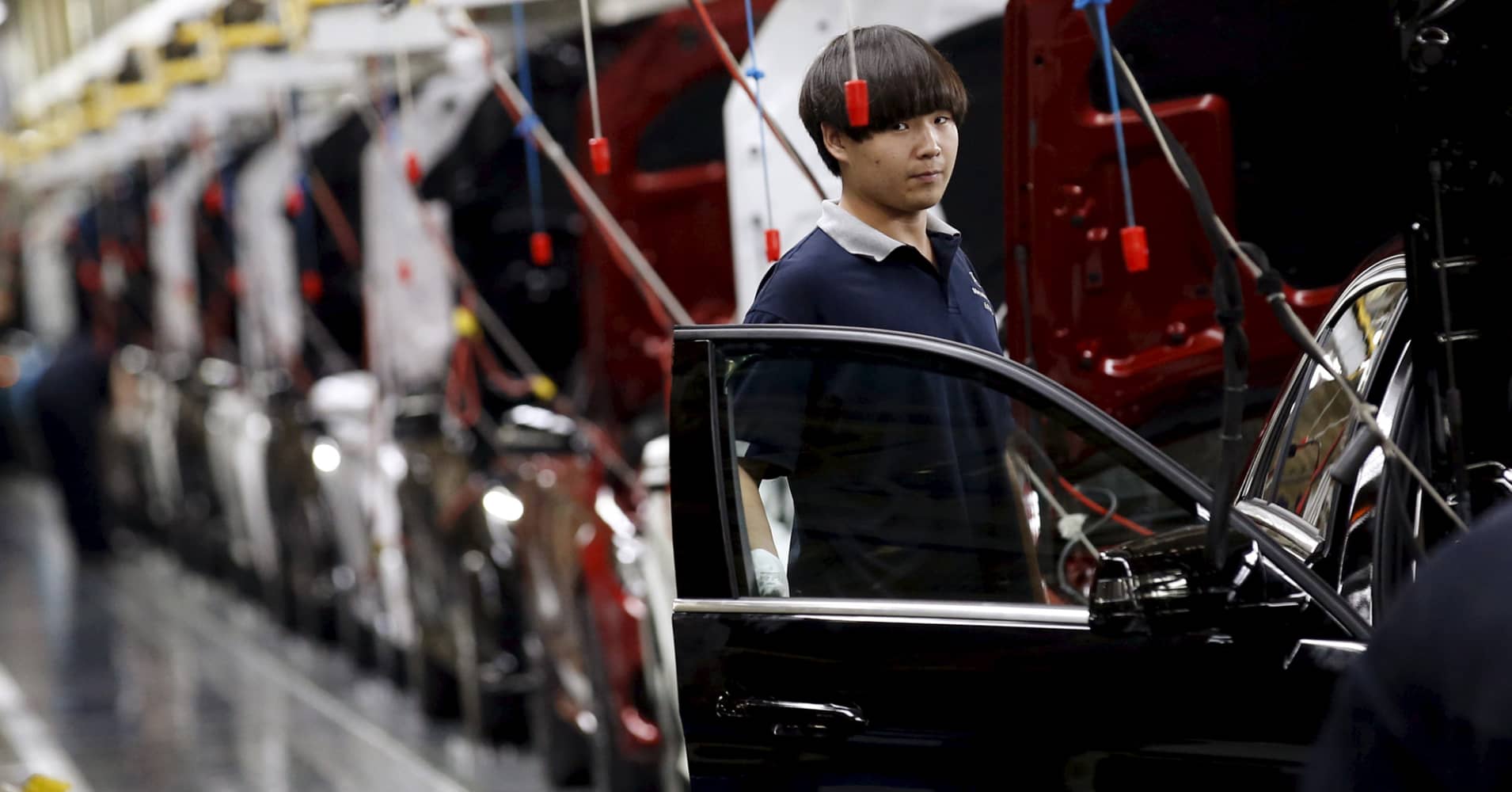
A private survey on China’s manufacturing sector showed on Friday that factory activity contracted more-than-expected in January — confirming views that the world’s second-largest economy started the new year on soft footing.
The Caixin/Markit Manufacturing Purchasing Managers’ Index (PMI) came in at 48.3 in January — the second-consecutive month of contraction and the lowest reading since 2016. January’s reading was also weaker than the 49.5 that analysts polled by Reuters expected, and the 49.7 reported in December.
A reading above 50 indicates expansion, while a reading below that level signals contraction.
The PMI is a survey of businesses about the operating environment. Such data offer a first glimpse into what’s happening in an economy, as they are usually among the first major economic indicators released each month. Investors have been closely watching economic indicators from the world’s second-largest economy for signs of trouble amid domestic headwinds and the ongoing U.S.-China trade dispute.
“Latest survey data signalled subdued overall operating conditions in the Chinese manufacturing sector at the start of 2019,” the statement by Caixin and IHS Markit said. “Softer demand conditions led companies to revise their production schedules … Underlying data indicated that weakness largely stemmed from muted domestic demand.”
The Caixin PMI data followed the release of China’s official manufacturing PMI on Thursday by the National Bureau of Statistics. The official data came in at 49.5 — higher than 49.3 expected by analysts in a Reuters poll and the 49.4 reported in the previous month.
The two PMI surveys on the Chinese manufacturing sector showed different readings because of the types of companies being polled. Large businesses and state-owned enterprises make up a large proportion of responses in the official PMI, while the Caixin indicator has a bigger mix of small- and medium-sized firms.
Chinese authorities have introduced measures to support the economy in the past year, with a particular focus on helping to boost smaller firms. But Friday’s release of the Caixin measure indicated that the policies introduced so far to support the Chinese economy have not worked, said Zhengsheng Zhong, director of macroeconomic analysis at CEBM Group, a subsidiary of Caixin.
“On the whole, countercyclical economic policy hasn’t had a significant effect,” Zhong said in a statement. “China is likely to launch more fiscal and monetary measures and speed up their implementation. Yet the stance of stabilizing leverage and strict regulation hasn’t changed, which means the weakening trend of China’s economy will continue.”
Jian Chang, Barclays’ chief China economist, agreed that Beijing needs to do more. She told CNBC’s “Street Signs” that Barclays is expecting China’s central bank to cut benchmark interest rates by 25 basis points twice this year — in the first and second quarters, respectively — to further boost the economy.
But such supportive measures may take time to be effective, economists said. Economic growth in China could stay weak in the first half of 2019 given both external and domestic challenges, Citi economists wrote in a Thursday note. Last year, growth in China slowed to 6.6 percent — the lowest expansion rate in 28 years.
China’s manufacturing sector is not the only one feeling the pinch. Other export-oriented economies such as Japan, South Korea and Taiwan also reported weaker PMI numbers and lackluster factory outlook for 2019.





